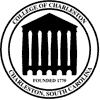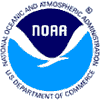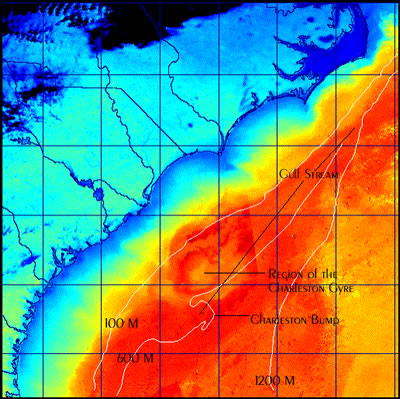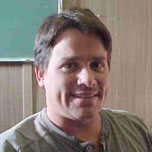| Charleston
Gyre |

 |
 |
 |
| January 28, 2003 “Exploration of the Charleston Gyre and its contribution to the production on the southeast United States continental shelf” By Rachel McEvers, Project Oceanica
Preliminary work indicates the swirling motion of the eddies that form off the Gulf Stream, brings nutrient-rich water from deep and off the shelf edge to near surface and results in enhanced primary production. Therefore, this may be an ideal place for juvenile fishes to feed as they grow. The reason for this cruise is to assess production of the Charleston Gyre, its contribution to production of the entire southeastern Atlantic Bight, and its potential as pelagic spawning and nursery habitat for fishes. Right now we are making CTD casts every 5 miles. The CTD tells us the temperature, salinity and depth of the water. By measuring the temperature and salinity, we are able to determine when we are within the Charleston Gyre. Once the center of the eddy (gyre) is reached, drifters will be released. Five are satellite-tracked and one is GPS-tracked from the ship. The GPS-tracked drifter will be followed. Three MOCNESS (plankton net) tows will be made in the vicinity of the drifter each night and one will be made during the day. CTD casts will be made throughout the cruise to make sure we are still in the eddy. Once the mission is over, the GPS-tracked drifter will be retrieved. The satellite-tracked drifters will continue to send information via satellite even after the cruise is completed. Career of the Day:
The thing Robin likes best about
his job is being by the water. The only thing he doesn’t really
like is that the fieldwork sometimes keeps him away from his family
for long periods of time. When asked what kind of sea creature he would
like to be he said a seahorse. His reason was “they’re cool”.
|
| Ph.
843-953-7263 |
Project
Oceanica Dept. of Geology & Environmental Geosciences College of Charleston Charleston, SC 29424 |
Fax
843-953-7850 |

 Robin
works in the Beaufort, NC NOAA lab. He has a Bachelor’s degree
in fisheries and wildlife science from North Carolina State University
and a Master’s degree in zoology also from NC State. Robin says
he decided to become a marine scientist when he moved to Wilmington,
NC and fell in love with the sea. Robin’s duties include fieldwork
in the Florida and Chesapeake Bays monitoring fishes regarding sea grass
habitats and marsh restoration. In the lab he weighs, measures and records
information about the fish he has caught. He then analyzes and records
his findings. He is very interested in larval fish growth rates related
to the warm water eddies that spin off the Gulf Stream.
Robin
works in the Beaufort, NC NOAA lab. He has a Bachelor’s degree
in fisheries and wildlife science from North Carolina State University
and a Master’s degree in zoology also from NC State. Robin says
he decided to become a marine scientist when he moved to Wilmington,
NC and fell in love with the sea. Robin’s duties include fieldwork
in the Florida and Chesapeake Bays monitoring fishes regarding sea grass
habitats and marsh restoration. In the lab he weighs, measures and records
information about the fish he has caught. He then analyzes and records
his findings. He is very interested in larval fish growth rates related
to the warm water eddies that spin off the Gulf Stream.